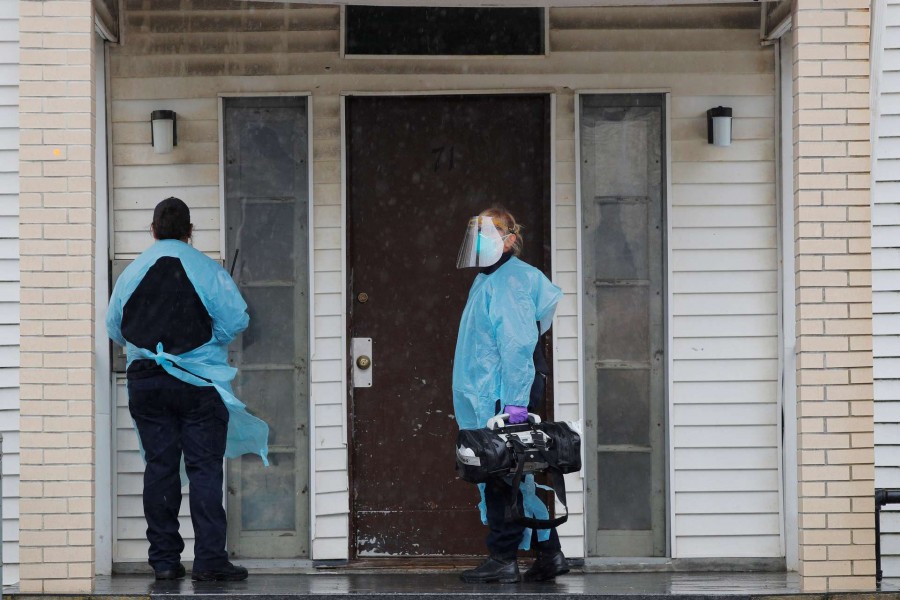As teenagers lost structure amid online schooling and the cancellation of activities, the number of 911 calls involving the young and drugs rose dramatically, records show. Some experts see a connection between the school closings and distress calls.
This April, a friend of high school ice hockey player Sequoyah Klingele became concerned when Sequoyah wasn’t responding to messages. The friend went looking for the 16-year-old and found him unresponsive in a house in La Honda, California, a small town in the Santa Cruz Mountains.
The friend dialed 911, police records show. There was nothing emergency responders could do: Sequoyah, who had accidentally overdosed on methadone, had been dead for several hours.
Last year, with schools, youth sports and other programs closed nationwide in an attempt to slow the spread of the coronavirus, the rate of drug-related 911 calls for young people aged 20 and under increased by 43 per cent, an analysis of emergency response data by Reuters found.
For the previous three years, rates had remained stable at about 25 emergency drug responses per 100,000 calls. During the pandemic, those numbers spiked to more than 37 per 100,000, according to data from the National Emergency Medical Services Information System.
Last year, NEMSIS collected data on 27.3 million 911 emergencies from 47 states; 10,166 of those were drug-related calls involving young people. The last four years’ worth of call data NEMSIS shared with Reuters include granular information about each call, such as the age of the patient and the type of medical issue, without identifying anyone.
The NEMSIS data, collected voluntarily from 911 response agencies nationwide, represents about 87% of all U.S. emergency responses. Because the number of agencies that report data vary annually, it is not possible to compare the total number of young people requiring drug-related emergency care from year to year.
More than 80% of the drug emergencies involved use of opioids such as pain medications, fentanyl and heroin, but included all classes of drugs.
The rate of emergency calls involving young people who required naloxone – a drug that reverses an opioid overdose – increased by 34% from 2019 to 2020, to the highest rate of use since at least 2017, the earliest data available, according to NEMSIS data. Naloxone successfully revived a patient about half the time, the data showed.
Brandon Marshall, an epidemiologist at Brown University who studies overdoses and drug use, said shelter-in-place and other social restrictions both exacerbated risk factors for youth to start using drugs and created a more dangerous environment for drug use, resulting in more extreme emergencies. Typically, drug use among young people is social, with friends around to help amid an overdose situation, he said. That changed during the pandemic.
“What we know is that the way that people use drugs during adolescence shapes and influences their drug use later on and into adulthood,” Marshall said. “What's alarming me is that if people become accustomed to using isolated and not in a social setting now, that establishes itself as a norm that could continue to put people at risk, well into adulthood.”
Last year, about 93,000 people nationwide died after overdosing, a nearly 30% increase from the year before, according to data released in July by the Centers for Disease Control and Prevention. National data separating out the number of children and young adults who died won’t be available until late this year or early 2022.
Reuters obtained data from nine cities and states; eight of the jurisdictions showed a significant increase in youth overdose deaths in 2020.
Los Angeles, for instance, reported 37 drug overdose deaths among those 17 years old or younger, up from the previous three years when between 10 and 15 children died annually. The trend follows in Denver, which reported 10 deaths among minors in 2020 after only seeing three overdose deaths in 2018 and 2019 combined.
In cities such as San Francisco, paramedics say they are dealing with the grim fallout from drug abuse by the young. Jeff Covitz, a paramedic in the northern California city, said many of the calls he attends involve street fentanyl often cooked up in illicit labs, which can require more than three times as much naloxone to reverse than heroin. “It would wake up an elephant,” he said.


